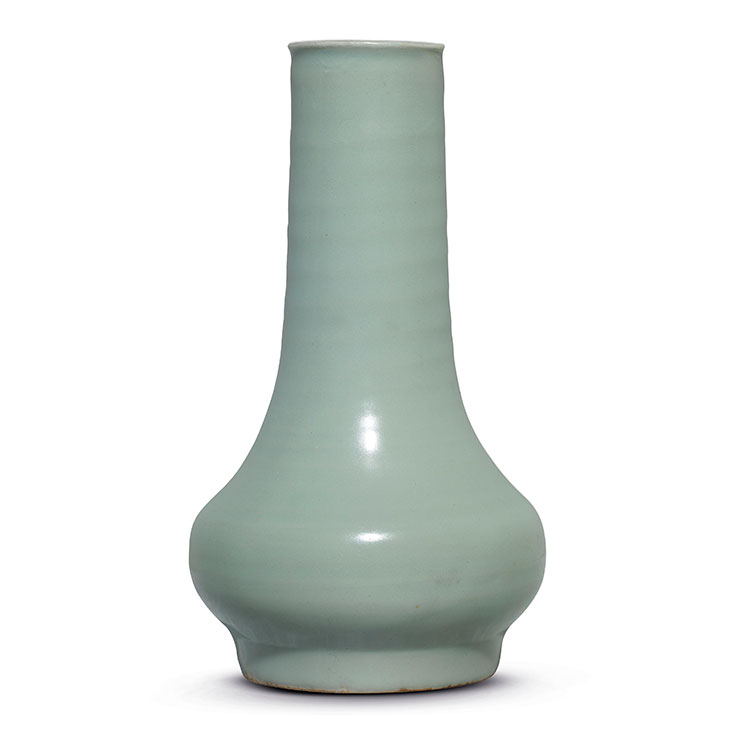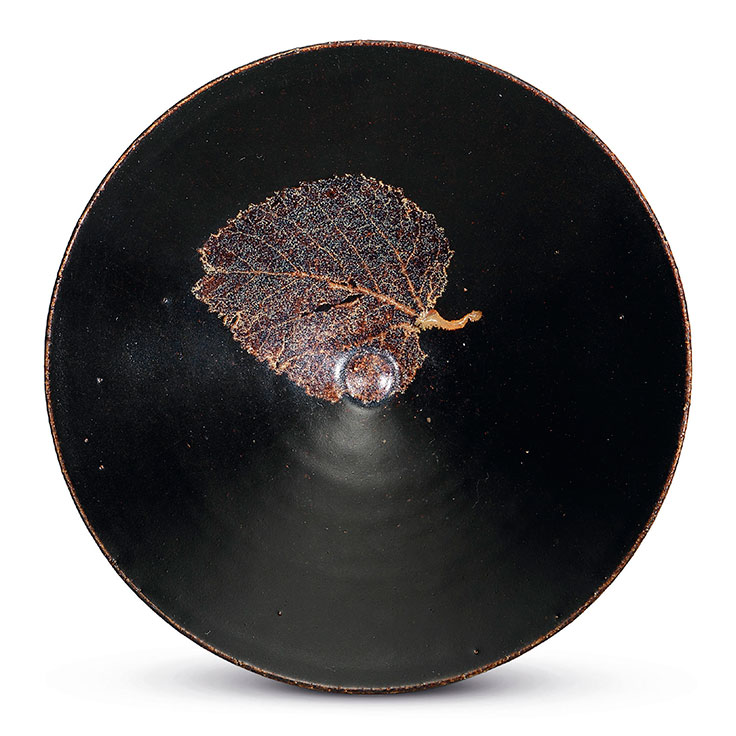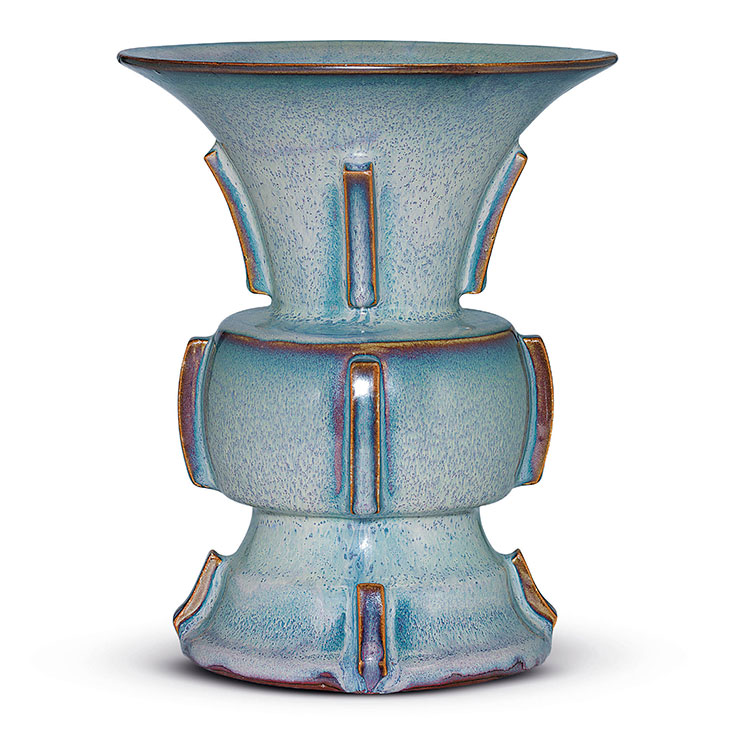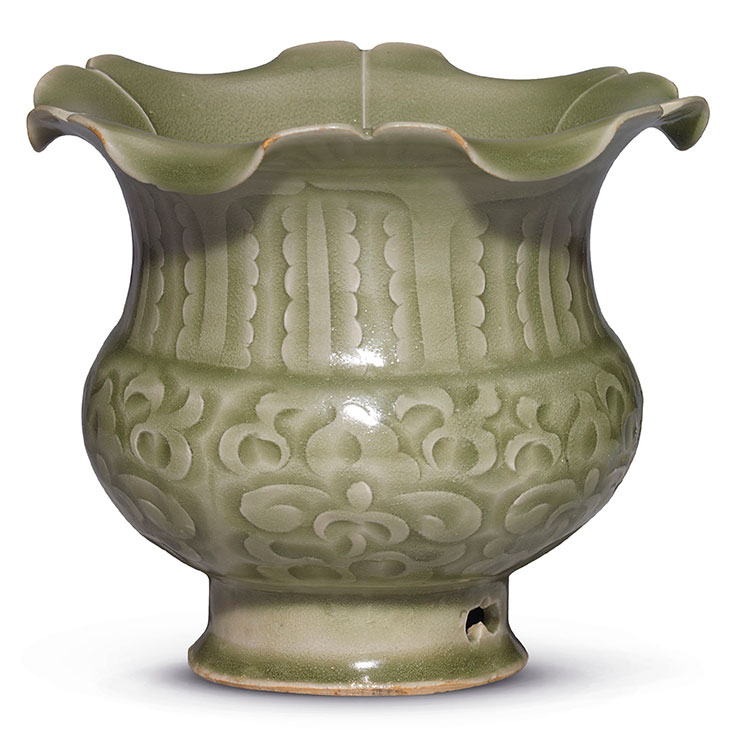1. Learn the different kilns
The value of a Song ceramic is first based on the kiln where it was originally made. The most precious and highly valued objects come from one of five kilns — Ru, Guan, Ge, Ding, Jun. Production in the kilns was heavily monitored. There were very strict regulations for who could possess or use these wares; imperfect pieces were destroyed to keep them from ever being circulated.
Of these five kilns, Ru ware is the most rare. Today, there are only around 70 pieces of known Ru ware in private collections and museums — and Jessica Chang says that a Ru ware very rarely appears on the market. Needless to say, they usually auction for many millions of dollars.
Fortunately, high-quality ceramics were also made for daily use. Scholars and prominent families were the first collectors of such objects. ‘It was considered fashionable and was a reflection of your cultural sophistication to acquire these beautifully potted vases and other vessels.
More examples of these pieces, which were made in cities such as Longquan, Yaozhou and Cizhou, remain today, and are eagerly sought by collectors. They are generally marked by slightly more ornate designs. Longquan celadons, in particular, are popular on the market.
2. Study the forms and bases
Beyond where it was made, what marks a Song ceramic is its elegant proportions and form. Eash kiln specialised in specific types of glazes which are associated with specific forms that can be difficult to spot without an expert eye, especially considering that so many copies were made of the pieces, not only later in history, but also during the same period. ‘There exists a specific vocabulary of kiln, glaze type, and form. If the glaze type does not match the form, then this is a big red flag,’ says Chang.
She also notes that while looking at images of Song ceramics in books and online databases is helpful, nothing trains the eye like studying them in person. For this, she suggests visiting a number of exemplary collections around the world.
The Sir Percival David collection at the British Museum, for example, has an encyclopaedic collection arranged by glaze colours.
‘Museums are excellent resources for training your eye, and this will help you to learn how to identify different types,’ says Chang. The
National Palace Museum in Taipei has 21 pieces of Ru ware — the largest collection of such precious objects in the world. And finally, the
Museums of Oriental Ceramics in Osaka, Japan, has an extensive collection of Longquan celadons. ‘In Japan, celadons have been traditionally revered by collectors,’ Chang says.
3. Look for marks made by the artisan
One of the most wonderful things about looking closely at an ancient object is being able to see the unintentional marks left behind by the artisan. For certain types of Song wares, particularly in reference to Ding wares, it is common to see traces of the artisan’s markings. These markings, Chang says, are a good indication of authenticity.
When examining a vessel from the Ding kiln, Chang suggests, look for traces of fingernail impressions around the foot rim. They were left by artisans who hand-dipped the objects into glazes. ‘Many modern fakes have much less of a chance of bearing these markings.’
4. Think about presentation
The beauty of Song ceramics lies in their simplicity. As a result, they fit into almost any setting or home. But it’s a shame to bury such an exquisite object in a noisy background where it will be lost. After all, you have invested a lot in collecting these rare and beautiful objects, so presentation is important. Chang suggests a simple glass case against a neutral background, lit by clean lighting: ‘This helps focus on the form and the luscious glazes. It’s a shame to collect a Song ceramic, put it in a box, and then hide it in storage,’ she notes.
5. Preserve it well
Given that porcelain is not an organic material, collectors of Song ceramics don’t have to worry about the temperature and humidity of the room where they display their objects. However, the pieces are fragile, which means that shielding them behind glass is the safest — and most advisable — option for display.
Given the age of the ceramics, fully intact examples are quite rare, and Chang notes that some restoration is common. Collectors may find pieces develop condition issues with age, in which case the specialist suggests a good restoration is definitely worth the investment. ‘There are so many new technologies and materials,’ she says. ‘Restoration work can be nicely done if you use a good restorer.’
6. Don’t be discouraged by high prices
Given the rarity, Song ceramics are precious and highly priced objects. The millions paid for Ru ware, however, shouldn’t scare off burgeoning collectors: there are many examples of Song ceramics in great condition that are relatively affordable, running in the thousands of dollars. Chang says, ‘The prices realised at auction for this category vary and are determined by factors such as the quality, the glaze, the rarity.’
http://www.christies.com/features/Collecting-Song-ceramics-6375-1.aspx
























